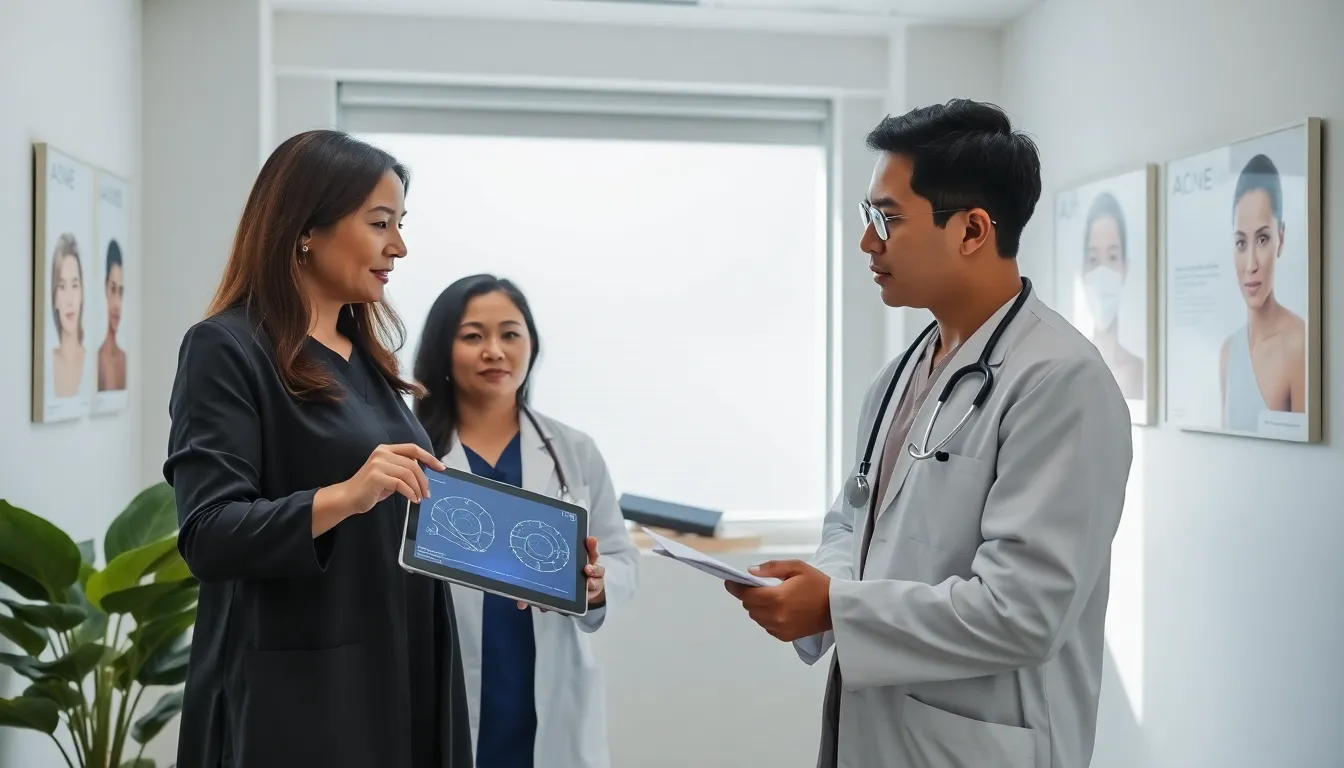Accutane, the miracle drug that turned many a pimple-faced teen into a glowing skin guru, isn’t guaranteed to keep those pesky blemishes at bay forever. If you’ve been through the rollercoaster ride of Accutane treatment, embracing both the ups of clear skin and the downs of weird side effects, you might be left wondering: “Is my acne back?” Don’t worry: it’s totally normal to have a bit of post-Accutane anxiety. Let’s jump into how you can tell if that unwelcome guest is knocking at your door again, while keeping a light-hearted approach to this serious topic.
Table of Contents
ToggleUnderstanding Accutane and Its Effects

Accutane, known scientifically as isotretinoin, is a powerful medication primarily used for treating severe acne. It works by reducing the size and output of sebaceous glands, leading to less oil production and, later, fewer breakouts. The treatment process may feel like a marathon, but for many, it ends in the bliss of clear skin. But, understanding how Accutane affects not just the skin but the entire acne cycle is crucial.
What many don’t realize is that Accutane can significantly alter the skin’s ecosystem. After completing a course of treatment, the skin often appears smoother, healthier, and, most importantly, acne-free. Yet, while it tackles the root causes of acne, it doesn’t guarantee immunity from future breakouts. Awareness and vigilance are key to catching the signs of any recurrence.
Common Signs of Acne Recurrence
So how can one tell if acne is gearing up for a comeback? There are several telltale signs that may signal an uprising of those unwanted visitors:
Increased Oiliness
After Accutane, skin typically experiences a reduction in oiliness. If your skin suddenly feels greasier than a fast-food fry basket, it might be time to take note. This increase in oil can lead to clogged pores, which can pave the way for new breakouts.
New Bumps or Redness
Not all bumps are created equal. If you start noticing new red spots, especially if they’re sore or tender, an acne resurgence might be on the horizon. While they could merely be random skin irritations, it’s vital to monitor their progression.
Flare-Ups in Specific Areas
Often, recurring acne starts in familiar places, like cheeks, forehead, or chin. Individuals might find that their skin reverts to familiar battle zones. Keep an eye on these hotspots, as they often indicate an impending acne spurt.
Sensitivity and Irritation
Skin post-Accutane can shift from being oily to extremely sensitive. If products that once felt fine now leave the skin itching or burning, it might indicate that something is amiss beneath the surface.
Factors That Influence Acne Return
Understanding why acne makes a guest appearance again after Accutane requires diving into the factors that influence this unwelcome return.
Hormonal Changes
Hormones are sneaky little devils. Fluctuations due to puberty, menstruation, or stress can trigger acne flare-ups even after successful treatment. Those with a history of hormonal acne should be especially vigilant during these periods.
Diet
Who would’ve thought that pizza could be in cahoots with your skin? A diet high in refined sugars and dairy could contribute to acne recurrence. It’s not always the case, but enjoying moderation can help keep breakouts at bay.
Stress and Lifestyle
Stress can wreak havoc on the body in many ways, including skin health. High-stress levels escalate inflammation, which may lead to renewed acne outbreaks. Incorporating stress-reducing activities can make a world of difference.
Skincare Regimen
After Accutane, maintaining a proper skincare routine becomes crucial. If products change frequently or stop being as effective, skin might react negatively. Sticking to a regimen that suits the skin type can help ongoing management.
Managing Skin Health Post-Accutane
Keeping skin in tip-top shape after Accutane can feel like a challenging job. Here are some key practices to incorporate into your skincare routine:
Hydration
While Accutane may have dried out skin initially, staying hydrated is essential post-treatment. Drinking plenty of water and using moisturizers can help maintain the skin’s barrier and overall health.
Gentle Cleansing
Using a mild and non-comedogenic cleanser can help reduce the risk of pore blockage. Avoid heavy scrubbing or harsh exfoliants, as these may cause irritation and trigger breakouts.
Non-comedogenic Makeup
Switching to non-comedogenic makeup can prevent pore clogging. Plus, it’ll be a great way to feel fabulous without compromising skin health.
Regular Dermatologist Visits
Creating a schedule for regular check-ins with a dermatologist can be beneficial. They can provide guidance tailored to an individual’s skin type and needs.
When to Consult a Dermatologist
Even though best efforts, sometimes the signs of a recurrence can feel overwhelming. Know when to reach out for professional assistance:
Persistent Breakouts
If breakouts occur frequently or become painful, it’s essential to consult a dermatologist. Patterns of recurrent acne may warrant further evaluation and treatment guidance.
Changes in Skin Texture
Unexplained changes in skin texture, discoloration, or increased sensitivity should raise red flags. Seeking professional advice can lead to the right path for recovery.
Emotional Impact
Acne affects not just the skin but also emotional well-being. If skin issues lead to anxiety or depression, professional help can assist in managing the physical and emotional interplay.





